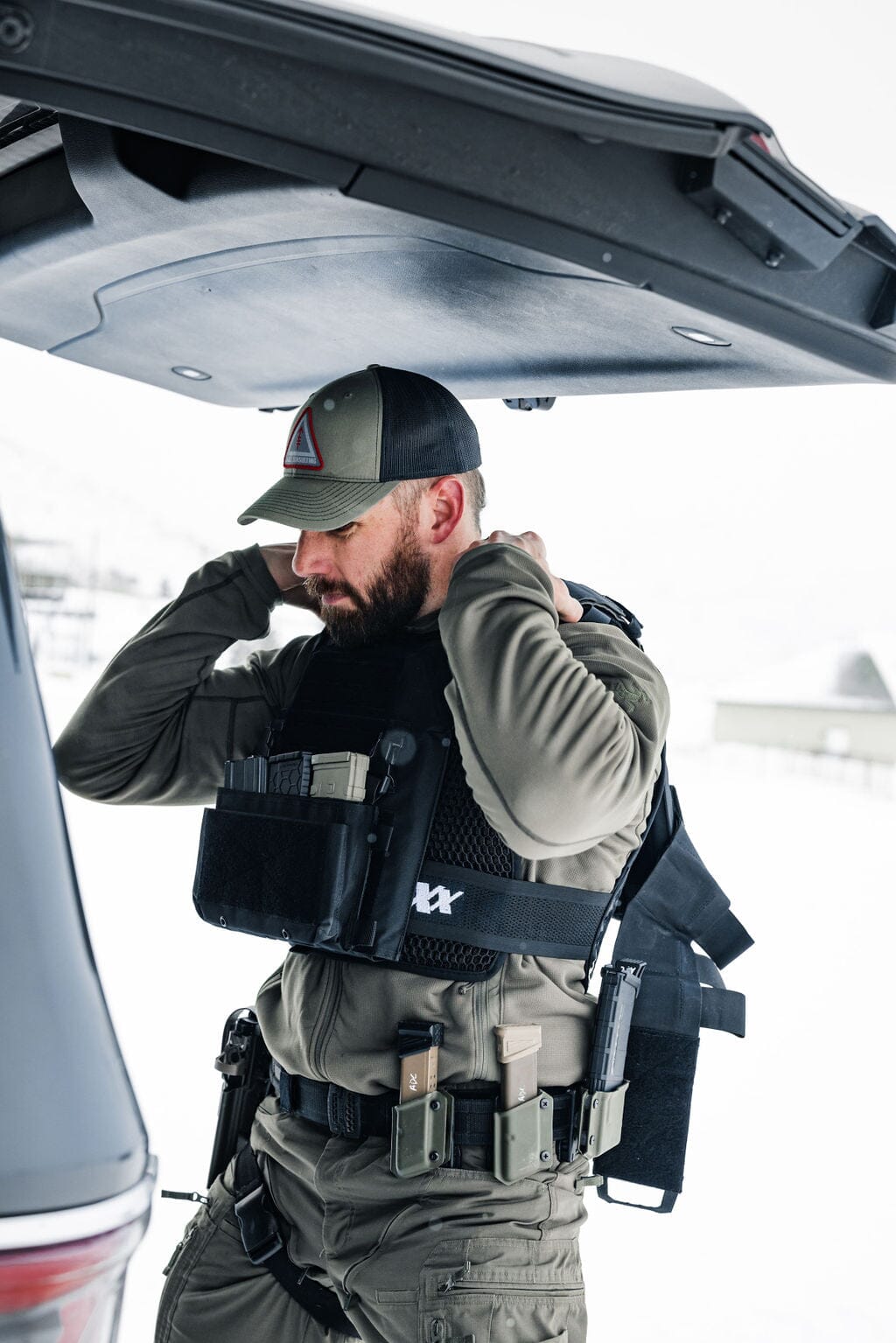
Body Armor For Civilians - Part 3: Body Armor for Home Defense
Part 3: Body Armor for Home Defense
My previous email discussed different types of body armor. Defending against a home invasion, I stressed that a priority was how quickly and easily you can put it on. The optimal body armor platform for speed is a plate carrier vest worn externally. (Since you’ll want both hands free to use a firearm, we can rule out anything that’s not worn, such as a ballistic shield.)
In addition to being quick and easy to put on, I’ll add a second priority: It needs to give you the best possible mobility, i.e., to crouch, to hide, to move quickly from one spot to another, perhaps through narrow passageways.
The Right Plate Carrier
Not all plate carriers are the same. Combat professionals (eg. military, SWAT teams) need to carry many tactical items, such as ammo magazines, rifle retention, a first aid kit, etc., and have to be able do a lot of things simultaneously. Their plate carriers must offer a great deal of utility. An example of this is 221B’s Shadow Plate Carrier.
You don’t want this for home defense. YOUR optimal carrier will be stripped down, bare bones, hold ballistic plates and provide storage for a few essentials, such as an extra magazine or speed loader, and perhaps a flashlight. An example of this is 221B’s QRF low-profile, minimalist plate carrier that can be thrown on super fast.
The Right Plates
I discussed NIJ ballistic levels in my prior email. Level IIIA is optimal for home defense situations, as most intruders will not bring rifles. This means you can use soft armor panels made of polyethylene, Dyneema(R) or Kevlar(R). Soft armor is lightweight and flexible and allows for a better fit with your carrier vest, and enhances your mobility. If you have reason to prepare for a rifle threat, a Level III hard plate should be adequate. (We carry all these plates at 221B, and we can answer any of your questions.)
Size is also important, because a good fit promotes protection and mobility. The correct size will cover your aortic arch at the top, and below your diaphragm at the bottom—and still allow you to move freely. If you look down and the plate hits your throat, it’s too long. The standard size for plates is 10” x 12”. This fits most men. Most women and children will experience a better fit from 8” x 10” plates, which are lighter weight and comfortable.
You and your family members will need plate carriers to hold optimal-size plates for your body frames. The plates should not move around inside the carrier vest when you move, which is why you should not insert 8” x 10” plates into 10” x 12” pockets. The 221B QRF Plate Carrier is the only one I know with separate pockets for both sizes, to provide a good fit for just about any body frame. I keep plugging the QRF because I designed it precisely for home defense.
Prepare Your Plate Carrier
You'll need to set up your plate carrier to enhance mobility and comfort prior to using. Adjust the carrier at your shoulders. It should be loose enough not to hinder breathing, but tight enough so when you move, it moves with you, as if it's a part of your body.
Even though you'll want as minimal a profile as possible, you should store an extra magazine or two for your firearm. Whether you store those on the front or the sides of your carrier depends on your specific situation. If you’re uncomfortable with gear in the front, or think you may need to get down into a prone position, you’ll put them on the sides. If you have to deal with narrow doorways or spaces, you won’t want them on the sides.
Practice Wearing Your Armor
Wearing a plate carrier with armor plates will affect your mobility and restrict your movement. If a home invasion occurs, you won’t have time or mental calmness to figure out anything. You’ll need to act from muscle memory. I cannot emphasize enough the importance of practicing putting on and wearing your body armor to simulate home invasion situations. I recommend the following:
1) Practice putting on your body armor quickly and efficiently until you’re confident you'll be able to do it in a real-life situation. Practice the most likely scenarios, such as getting out of bed in the middle of the night. By the way, you should keep body armor in every location within your home wherever you feel the need to keep a firearm for the purpose of home defense.
2) Practice moving around while wearing body armor. Walk around your home and practice moving through doorways, hallways, and tight spaces. Make sure you can move around easily while wearing your body armor, and get used to the added weight and bulkiness of the armor.
3) Practice shooting while wearing it. Shooting while wearing body armor is different from shooting without it. In your home, practice dry-fire shooting from different positions, including standing, kneeling, and prone.
4) Practice tactical movements and response tactics while wearing body armor. Along with the dry-fire shooting, practice moving around your home, taking cover behind furniture, and responding to different home-invasion scenarios. Make sure you can move around and respond quickly and effectively.
If you have questions about body armor, please don’t hesitate to email me at suresh-feedback@221btactical.com. You can also call with any product questions. 221B Tactical carries all the body armor platforms discussed in my emails this month.
Respectfully,
Suresh

Leave a comment